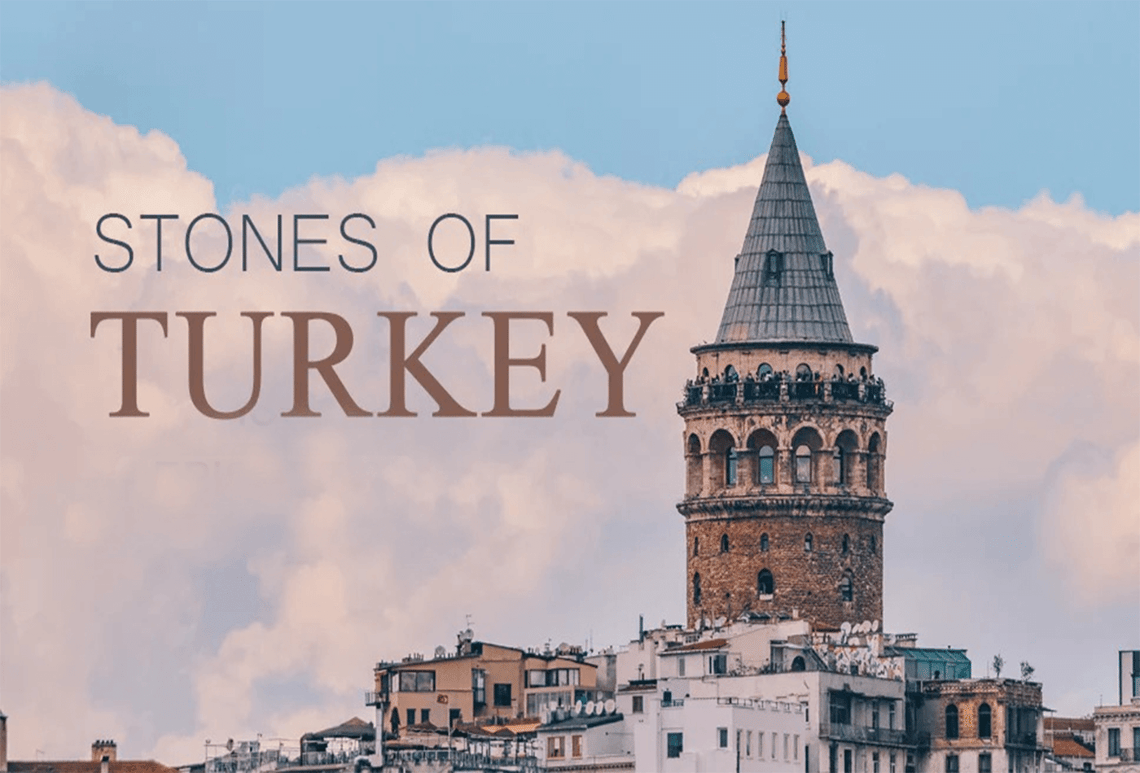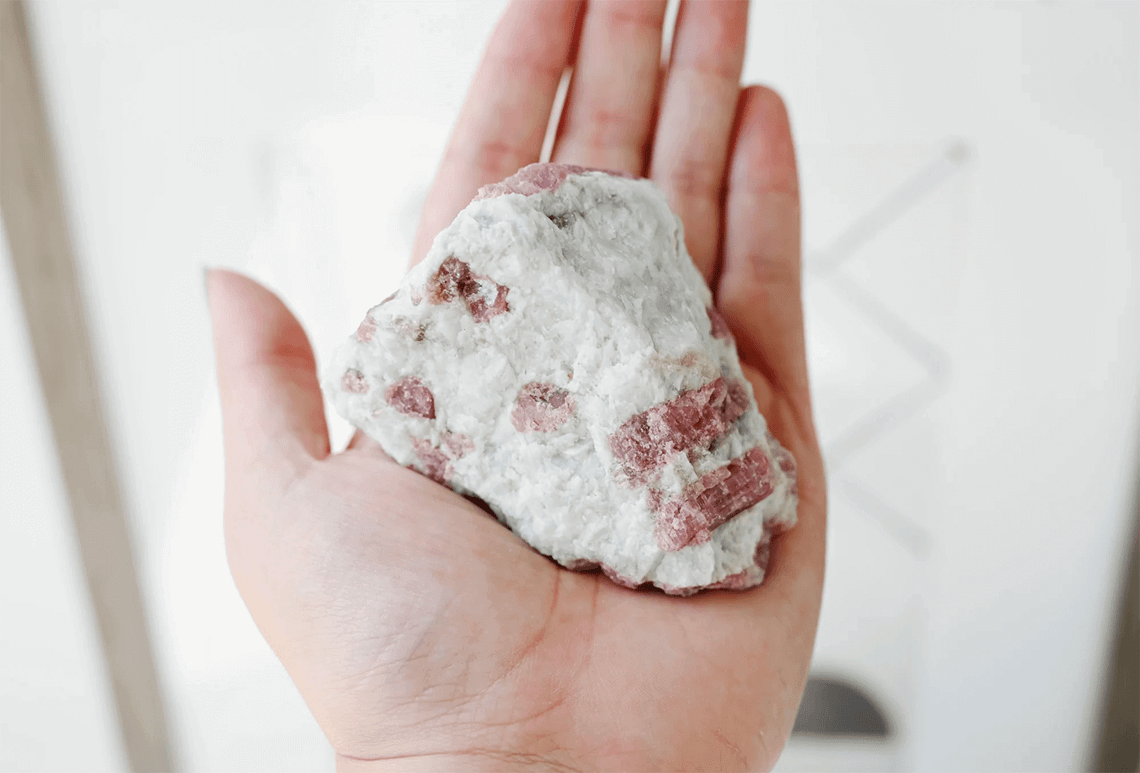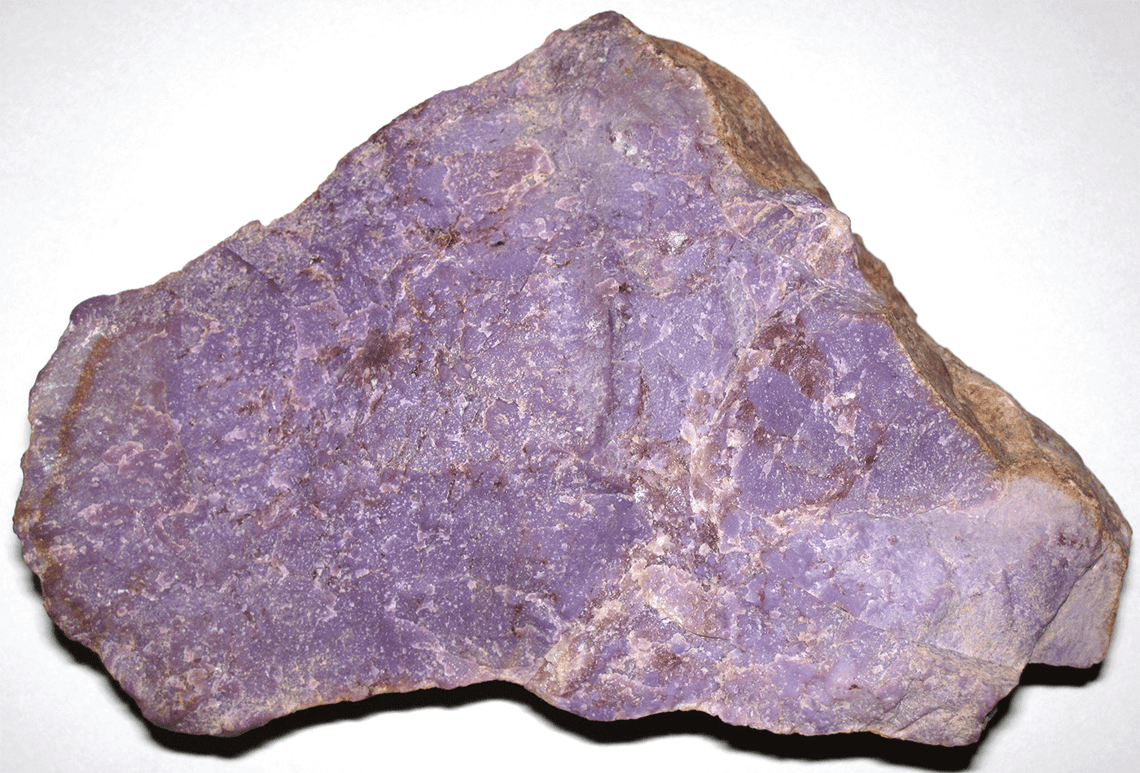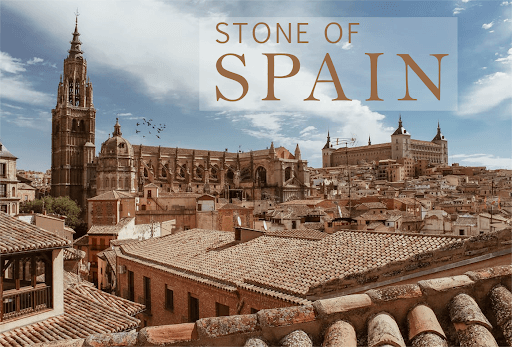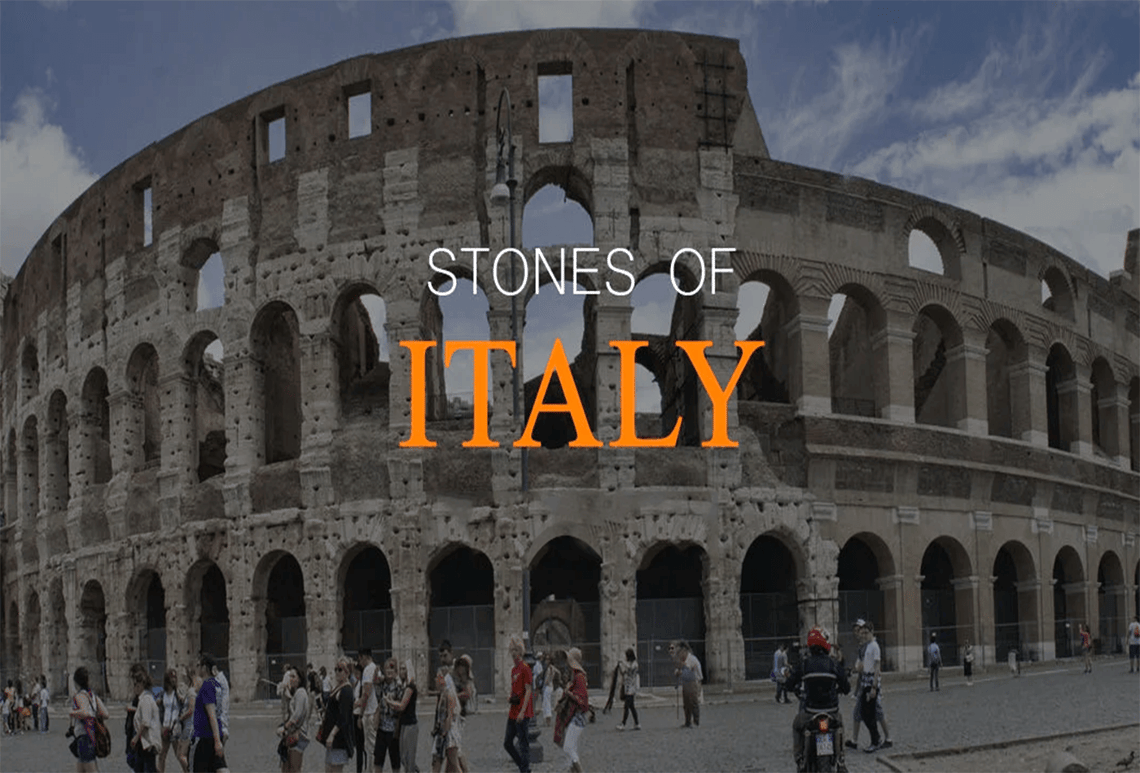Table of Contents
Commercial Stones of Turkey
Granite
Granite is among the most important commercial stones in Turkey. It is a natural stone that shares similarities with diabase, serpentine, basalt, crystalline and schist as all of these stones are formed based on magma. The components of these rock types have minerals such as silicates and other opaque minerals, which makes the Granite blocks quite difficult to cut, shape and polish. That is why they are much more resistant compared to other types of stones.
Granite is highly demanded not only in developed countries but also in the local market of Turkey. The characteristics of granite, which are its beautiful appearance, sturdiness over time, durability even in external use, and high resistance to erosion, make it attractive for both indoor and outdoor decorations.
Top Granite Stones of Turkey
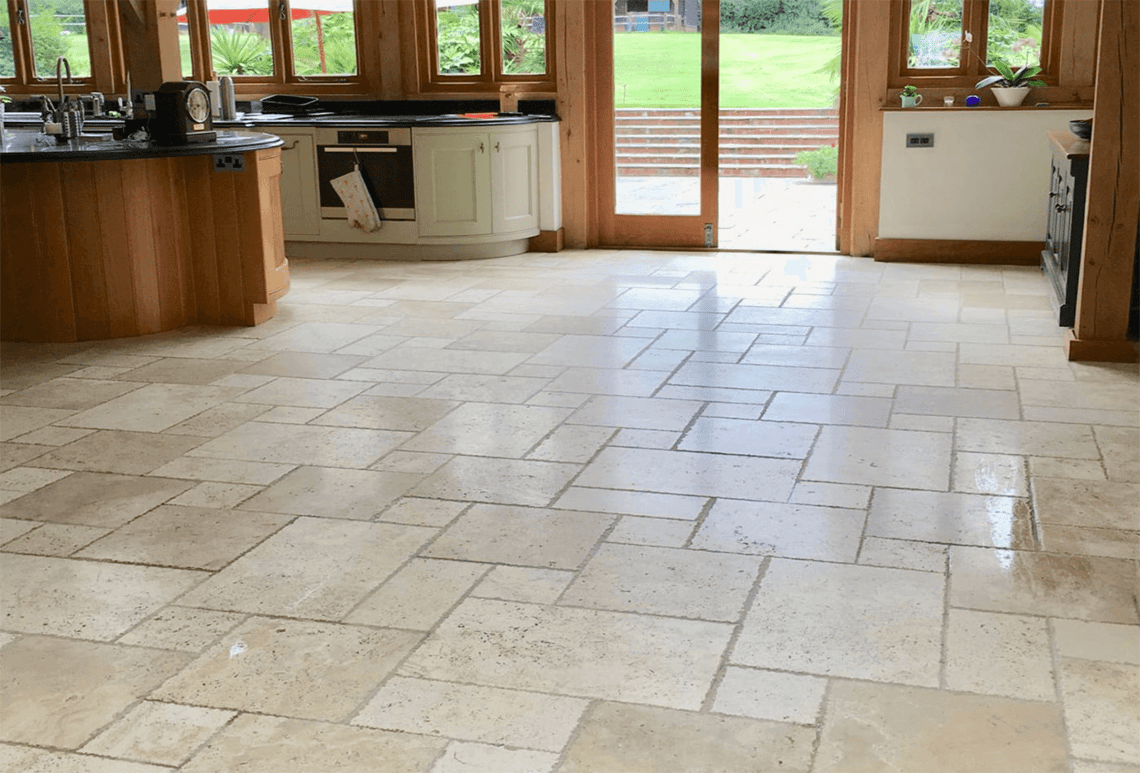 Admirable Natural Stones of Turkey
Admirable Natural Stones of Turkey
Ayvalik Granite
It is easy to take in the form of blocks and plates. While cutting sides and corners is easier, the process of shaping and polishing is normal, but cutting it can be slow. It is appropriate for indoors and outdoors and is generally used for plating, coating and decoration.
Thracian Granite
Its quality and properties are just the same as Ayvalik granite. It is also easy to take in the form of blocks and plates. Cutting sides and corners is easier; the process of shaping and polishing is normal, but cutting it can be slow. It is appropriate for indoors and outdoors and generally used for plating, coating and decoration.
Granite - Turkey Stone Source
Granite reserves are in Ordu, Rize, Trabzon, Kirklareli, Kirsehir, Bolu, Izmit, Canakkale, and Izmir. The sources of other magma-based stones such as diabase, serpentine, basalt, crystalline schist and gyans in Turkey are Kapidag in Balikesir, Armutlu in Bursa, Sivrihisar in Eskisehir, Gumushane, Zambakkaya (especially diabase) in Gemlik and Kurselik-Abbaslik (especially serpentine) in Bilecik.
What Rock Types Are in Turkey?
Stones of Turkey are massive and mysterious but not complicated as a maze. You must understand that the main rock units from the province of central eastern Turkey mainly consist of sedimentary rock from the Palaeozoic period or metamorphic rocks, Mesozoic limestones, ophiolites, and a mélange of Neotethyan, Cretaceous volcano-sedimentary rocks, with granitoids ranging from Cretaceous to Eocene, and post-Eocene cover units. Another amazing fact about the ! Turkey's "fairy chimneys" are natural yet surreal-looking spires up to 130 feet (40 meters) tall that were carved out of soft volcanic rock by the elements over millions of years.
Travertine
Travertine is the outcome of the separation of carbon dioxide from calcium carbonate. The colours of travertine are diverse, and they range from white to brown. It is easy to work on travertine as it is very light. Travertine is generally used as a coating material on tiles, mouldings, flooring, pavers, steps, countertops, basins, vanities, and fireplaces. Travertine can also be used in the coating of floors and walls. Travertine is generally preferred for outdoor use since it is durable, easy to apply, and abundant to find.
Travertine: Turkey Stone Source
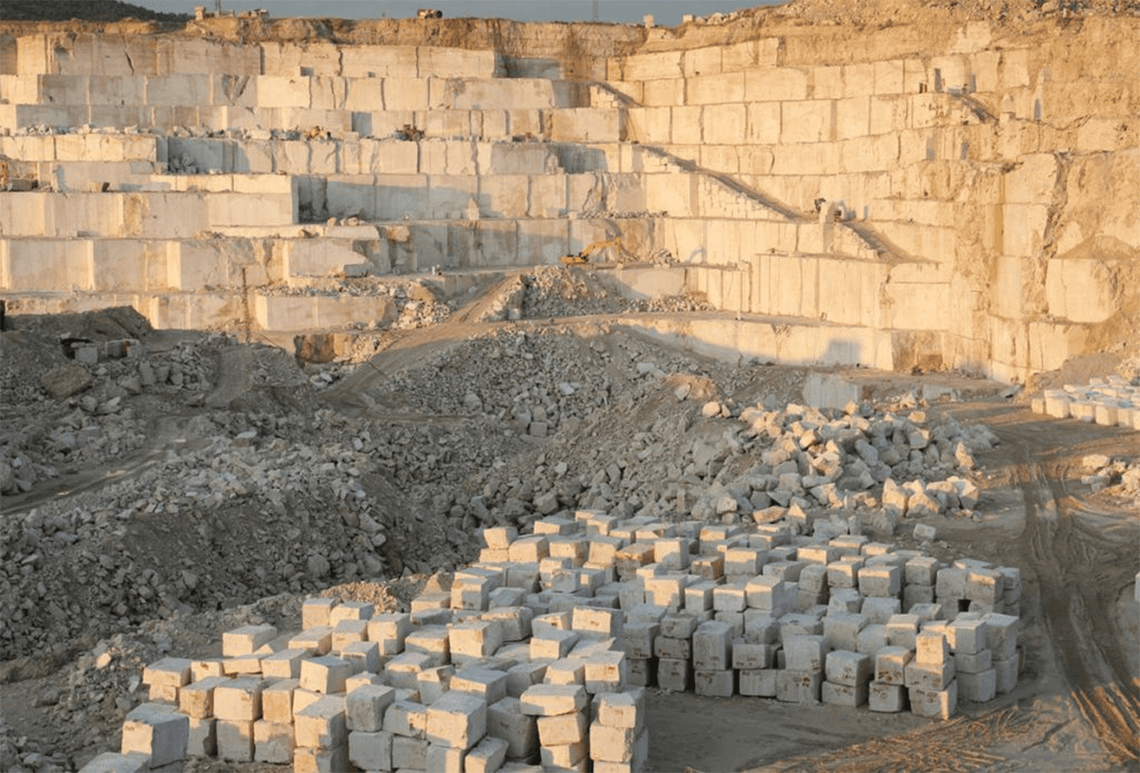 With more than 650 million metric tons, the broadest reserves of different travertine types are located in Denizli in southwest Turkey. Other sources of travertine in Turkey are: Antalya, Bursa, Malikoy - Haymana / Ankara, Eskipazar in Cankiri, Sicak Cermik / Sivas, Adana, Antakya, Reyhaniye, and Nigde (especially boron).
With more than 650 million metric tons, the broadest reserves of different travertine types are located in Denizli in southwest Turkey. Other sources of travertine in Turkey are: Antalya, Bursa, Malikoy - Haymana / Ankara, Eskipazar in Cankiri, Sicak Cermik / Sivas, Adana, Antakya, Reyhaniye, and Nigde (especially boron).
Onyx Stones
 Onyx is a crystal-like and semi-transparent stones of Turkey, which is also known as alabaster. Onyx has a wide variety of colour selections. Working with Onyx is easy because it is quite light. It is generally used as a coating material. Onyx is broadly used in tiles of floor and wall, mosaics, moulding, and paver. Vanities, sinks, showers, bathtubs, basins, countertops, and even pools can be designed with onyx.
Onyx is a crystal-like and semi-transparent stones of Turkey, which is also known as alabaster. Onyx has a wide variety of colour selections. Working with Onyx is easy because it is quite light. It is generally used as a coating material. Onyx is broadly used in tiles of floor and wall, mosaics, moulding, and paver. Vanities, sinks, showers, bathtubs, basins, countertops, and even pools can be designed with onyx.
Onyx: Turkey Stone Source
Sogut in Bilecik, Mudurnu in Bolu, Avanos-Avci-Terme in Kirsehir, Akhisar in Manisa, Cermik in Sivas and Cubuk in Ankara.
Conglomerate and Breccia
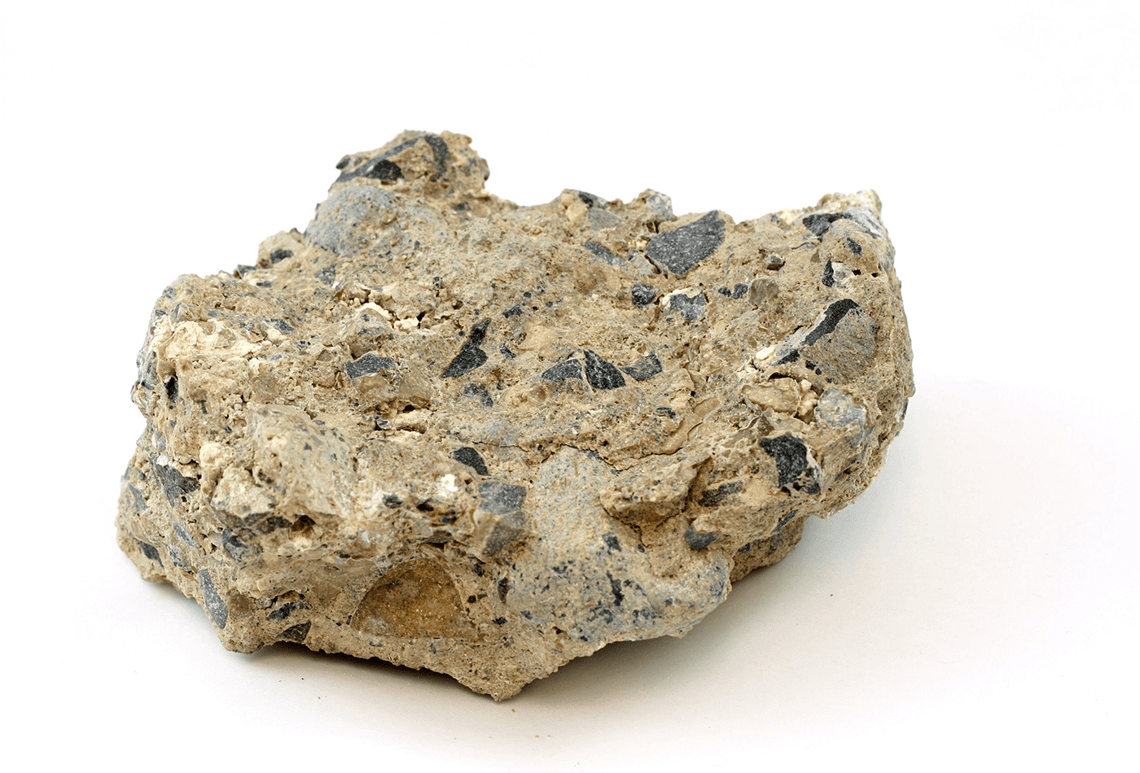 The fragments of marble carried by a stream through long distances would have round shapes. When these fragments larger than 2 millimetres are mixed with sand and natural cement, the new mixture is called a conglomerate. After cutting, shaping and polishing, it can be used as a coating product.
The fragments of marble carried by a stream through long distances would have round shapes. When these fragments larger than 2 millimetres are mixed with sand and natural cement, the new mixture is called a conglomerate. After cutting, shaping and polishing, it can be used as a coating product.
When the fragments of marble crushed by the tectonic movement of the earth are mixed with chemically precipitated cement, the new material formed is called breccia. Breccia is known for its vein-like patterns.
Conglomerates and Breccias: Stones of Turkey
Globe and Sogut in Bilecik, Orhaneli in Bursa, Harmantepe-Dokurcun in Sakarya (with the colour grey), Kutluca in Gebze Istanbul (with the colour beige), Hayman in Ankara (with the colour beige), Iskenderun (with the colour black), Bozkir in Konya (with the colours brown and red), and Toros in Adana (with the colour beige).
Turkish Stone Industry
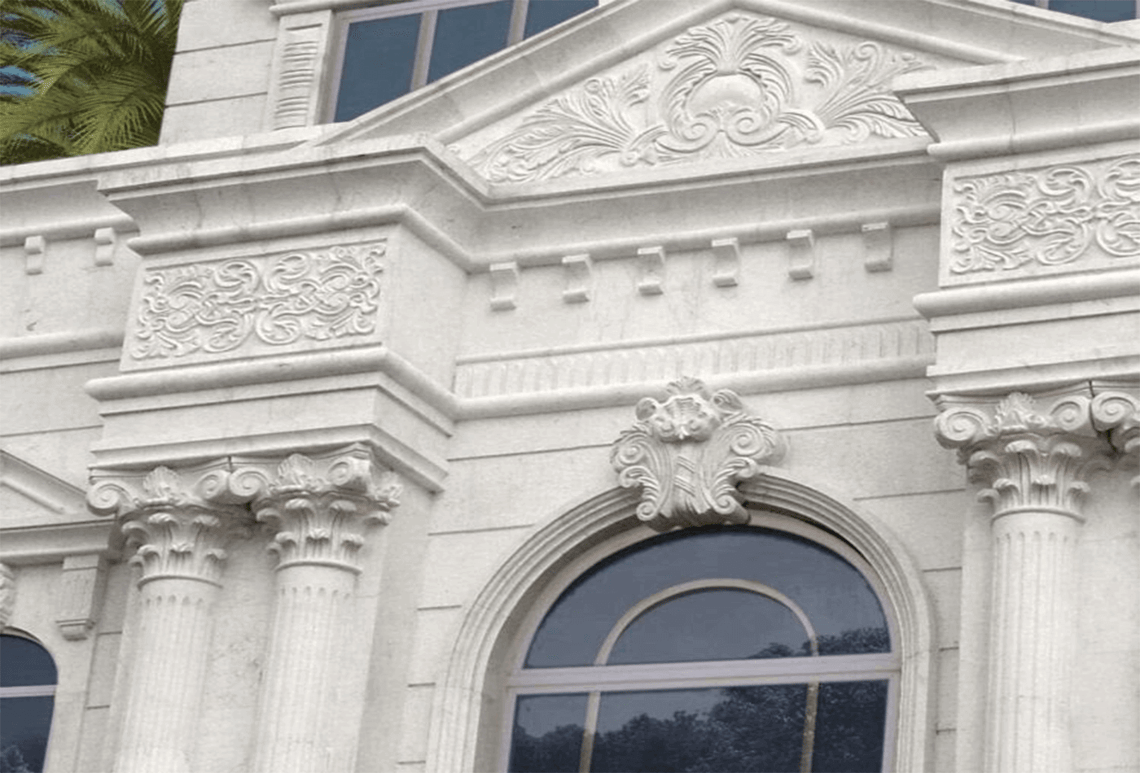 The natural stone industry in Turkey mainly consists of producing marble, granite, limestone, travertine, serpentine, diabase, and slate stone. In 1996, the General Directorate of Mineral Research and Exploration of Turkey (known as Maden Tetkik ve Arama Genel Mudurlugu, MTA) calculated the natural stone sources for the first time as 5x10.9 cubic metres. Since then, there has been constant growth of the natural stone industry in Turkey every year.
The natural stone industry in Turkey mainly consists of producing marble, granite, limestone, travertine, serpentine, diabase, and slate stone. In 1996, the General Directorate of Mineral Research and Exploration of Turkey (known as Maden Tetkik ve Arama Genel Mudurlugu, MTA) calculated the natural stone sources for the first time as 5x10.9 cubic metres. Since then, there has been constant growth of the natural stone industry in Turkey every year.
The annual growth rate on average has been twice that of the whole world. Following China, India and Italy, Turkey is the fourth country in the world in terms of the broadest natural stone production.
Natural stones of Turkey are spread all over the country. 32% of the reserves are in the Aegean Region, 26% in Marmara, 11% in Central Anatolia and 31% of the reserves are in the rest of the country, namely Eastern and Southeastern Anatolia, the Black Sea Region, and the Mediterranean Region.
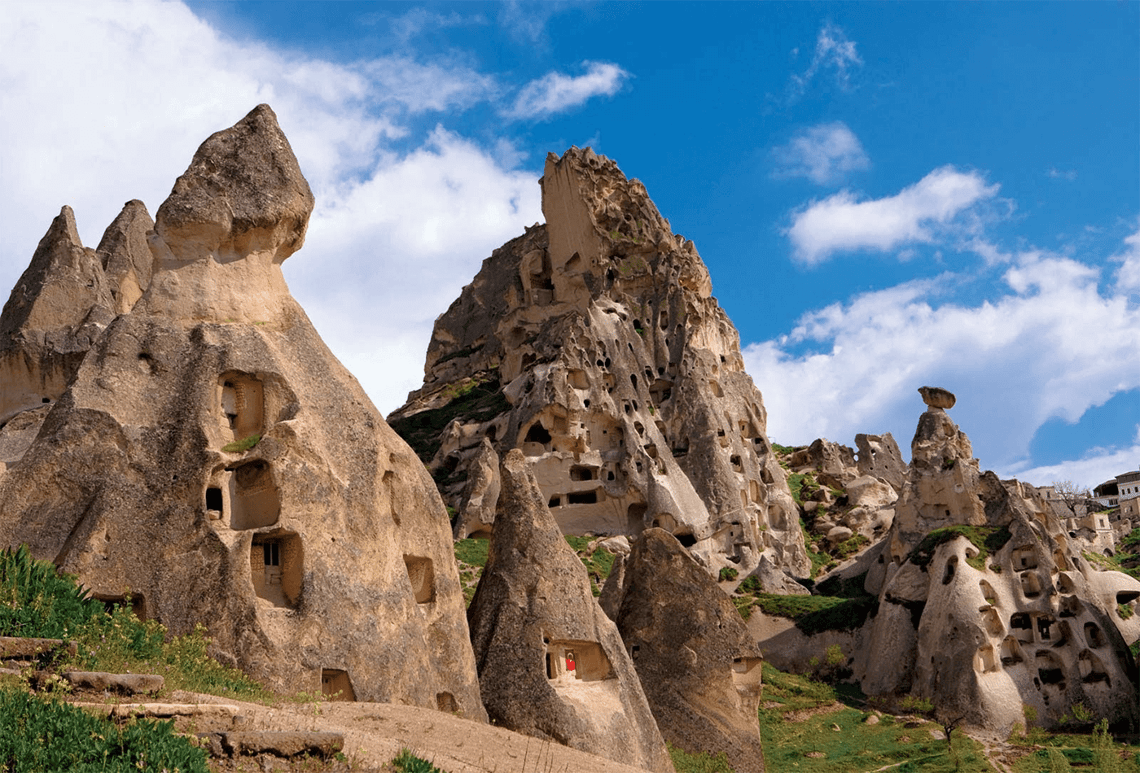
Furthermore, Turkey is one of the most notable countries in the whole world in terms of marble, travertine, and granite. The overall reserve of marble is estimated at 13.9 billion tons (nearly 5.1 billion cubic metres).
According to the data MTA reports, Turkey potentially has 5 billion cubic metres of marble. It is known that almost 35% of the marble reserves in the world are located in Turkey. With the current demand for marble, Turkey has enough reserves to supply marble for the whole world for the next 80 years. According to the studies, the capacity of marble that can be processed in Turkey is 3.8 billion m3. For travertine, it is 2.7 billion m3 and the capacity for granite is 995 million m3.
In Turkey, there are approximately 1000 functioning quarries, more than 7000 workshops, and 1500 factories processing the stones of Turkey. Moreover, approximately 250,000 employees are working in the sector. 90% of the quarries are in the regions of Aegean and Marmara: 27% in Balikesir, 24% in Afyon, 12% in Bilecik, 8% in Denizli, 6% in Mugla, and 4% in Eskisehir. The production in these areas represents 65% of the whole production in the country. In Afyon, there are 355 facilities processing marble, and 45 of them are highly integrated large-scale plants. Yearly production in Afyon is estimated to be 6.6 million square meters. 14% of the marble exports of the country are done by the companies in Afyon.
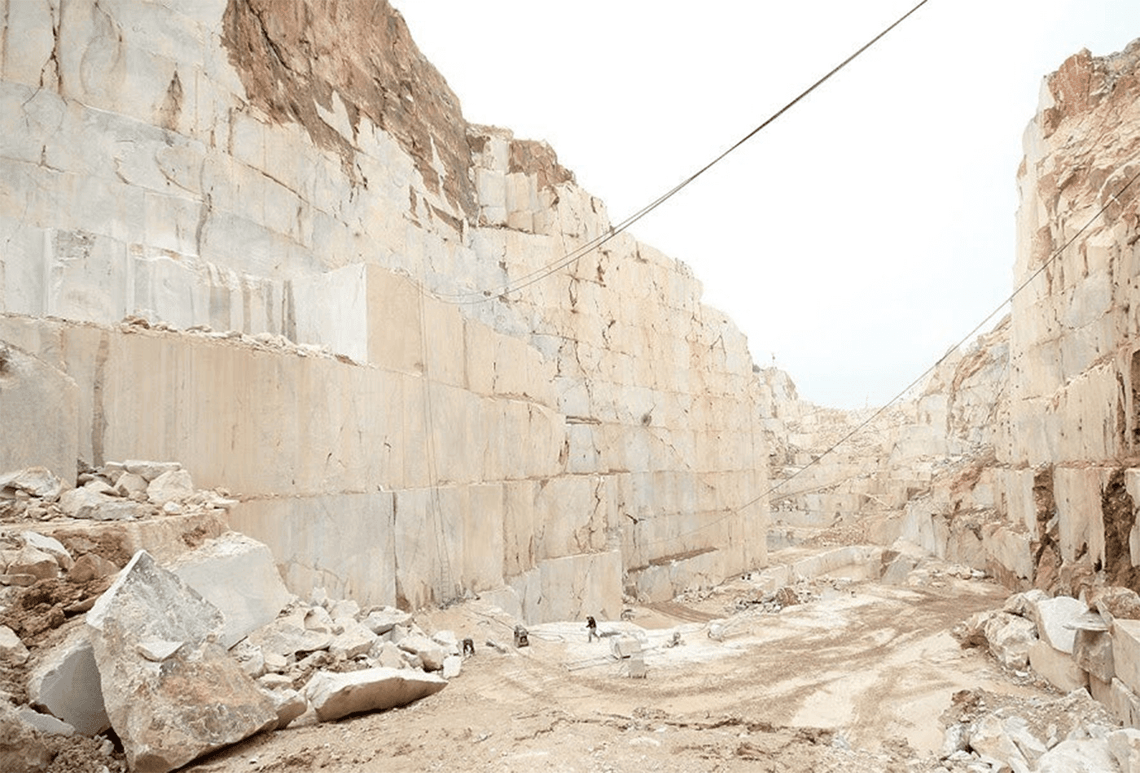
Sources and Production:
Thanks to the current production technology, methods, craftsmanship, and ease of transportation, Turkey is one of the leading countries in the natural stone industry. Since the quality of the stone is of great importance, advanced technology with entirely automated machinery is utilised during the manufacturing process. That is why the plants processing the stones are able to create the desired product with commercially high standards of quality. Even though the companies in the Turkish natural stone market are moderate in their size, they are standardised and well organised through associations and unions
Most of the quarries, namely 90% of them, are situated in the western part of the country that is known as the Aegean and Marmara Regions. More than 500 types of products are manufactured by companies throughout the country.
Gem Stones of Turkey
 Turkish gemstones are so popular! There are six semi-precious gemstones in Turkey that are the most significant in terms of abundance and authenticity. These include smoky quartz, blue chalcedony, chrysoprase (aka Şenkaya emerald), diaspore (aka sultanite/zultanite), sepiolite (aka meerschaum/Eskişehirstone), and jet (aka Oltu stone).
Turkish gemstones are so popular! There are six semi-precious gemstones in Turkey that are the most significant in terms of abundance and authenticity. These include smoky quartz, blue chalcedony, chrysoprase (aka Şenkaya emerald), diaspore (aka sultanite/zultanite), sepiolite (aka meerschaum/Eskişehirstone), and jet (aka Oltu stone).
Zultanite Stone: The Priceless Element To Adorn
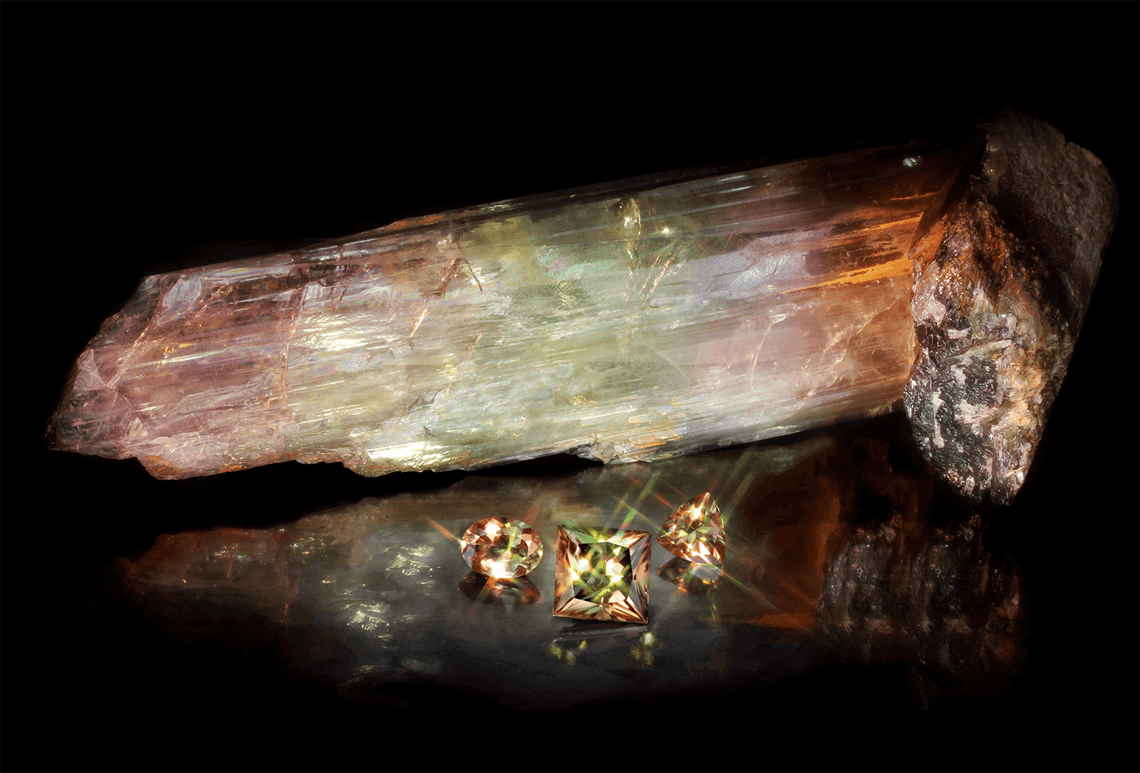 Zultanite is a rare and more recently surfaced gemstone that is only found in Turkey and has become one of the most popular stones of the millennium for its colour-changing properties. It is named by Murat Akgun in honour of the 36 sultans who ruled the Ottoman Empire in Anatolia in the late 13th century.
Zultanite is a rare and more recently surfaced gemstone that is only found in Turkey and has become one of the most popular stones of the millennium for its colour-changing properties. It is named by Murat Akgun in honour of the 36 sultans who ruled the Ottoman Empire in Anatolia in the late 13th century.
It is the world’s rarest type of diaspore—a mineral named after the word diaspora, which in Greek means to scatter—in reference to the way the gemstone sparkles and reflects light. Considered to be 10 times as rare as diamonds, zultanite has only ever been found from one source: the Ilbir Mountains of Milas, located in Turkey’s Aegean province of Muğla. Generally a yellowish-green gemstone, it can transform into a reddish-pink colour in incandescent light and even reach hues of purple in mixed lighting, and it can also possess the cat’s eye effect. Its healing properties are lesser-known due to it only having been discovered in the past few years.
Blue Chalcedony
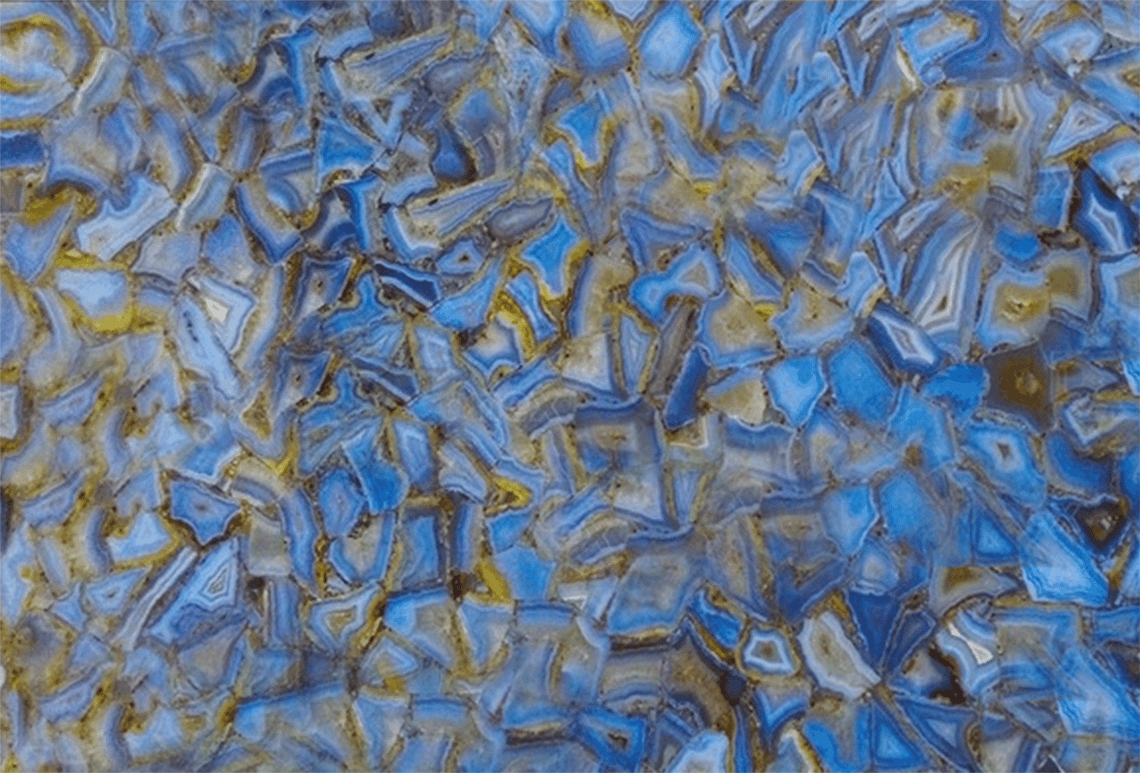 It is the oldest trade material from Anatolia of Turkey and has been used in jewellery for thousands of years. The name “chalcedony” is the original “Kalsedon,” which comes from the name of an ancient Anatolian port named Kalkedon. The name is still used today for any related materials with the same chemical composition.
It is the oldest trade material from Anatolia of Turkey and has been used in jewellery for thousands of years. The name “chalcedony” is the original “Kalsedon,” which comes from the name of an ancient Anatolian port named Kalkedon. The name is still used today for any related materials with the same chemical composition.
While chalcedony, which includes the varieties of agate and carnelian, can be found in a number of provinces throughout Turkey, including Ankara, Bursa, Çanakkale, Ordu, Rize and Tokat, the blue chalcedony hailing from Eskişehir’s Sarıcakaya region is definitely a much rarer find. The gemstones of Turkey have historically been used as jewellery and stamps dating back thousands of years. The highly coveted blue chalcedony comes in greyish to purple-blue hues and is believed to relieve hostility and irritability and to promote feelings of kindness and compassion. It is also believed to have played a good part in blood circulation, memory, and speech. Also believed to be beneficial to both lawyers and singers, who need to utilise their power of verbal expression.
Pink Tourmaline
Pink Tourmaline is another gemstone primarily sourced in Turkey’s Yozgat province but also found in the Aydın and Çanakkale provinces. Known as the “rainbow stone,” it can have a variety of different hues ranging from pink to green. It is generally agreed that traces of iron, and possibly titanium, induce green and blue colours. Manganese produces reds and pinks, and possibly yellows. Some pink and yellow tourmalines might owe their hues to colour centres caused by radiation, which can be natural or laboratory-induced.
It is believed to help break addictions and increase focus, and it is also said tourmaline can release lingering emotional pain and destructive feelings and generate sentiments of confidence and trust.
Turkish Purple Jade
It has jadeite and other minerals, including quartz, orthoclase, epidote, chloritoid, and phlogopite which give the stone that purple look. These stones of Turkey, also known as Turkish lavender jade as shade purple, do vary from deep purple to lavender and is an only relatively new gemstone in that mining did not start till 1980 in Turkey
This rare variety of lavender and purple-coloured jade comes from Turkey’s Bursa province. Also referred to as turkiyenite, this unique form of jadeite, aka imperial jade, is among the rarest in the world and is therefore extremely hard to come by. It has long been believed that jade eliminates toxins from the body, calms the nerves and cardiac system, and boosts the immune system. By keeping the wearer of this gem from harm, it is also said to bring the wearer good luck, love, and even money.
Obsidiana
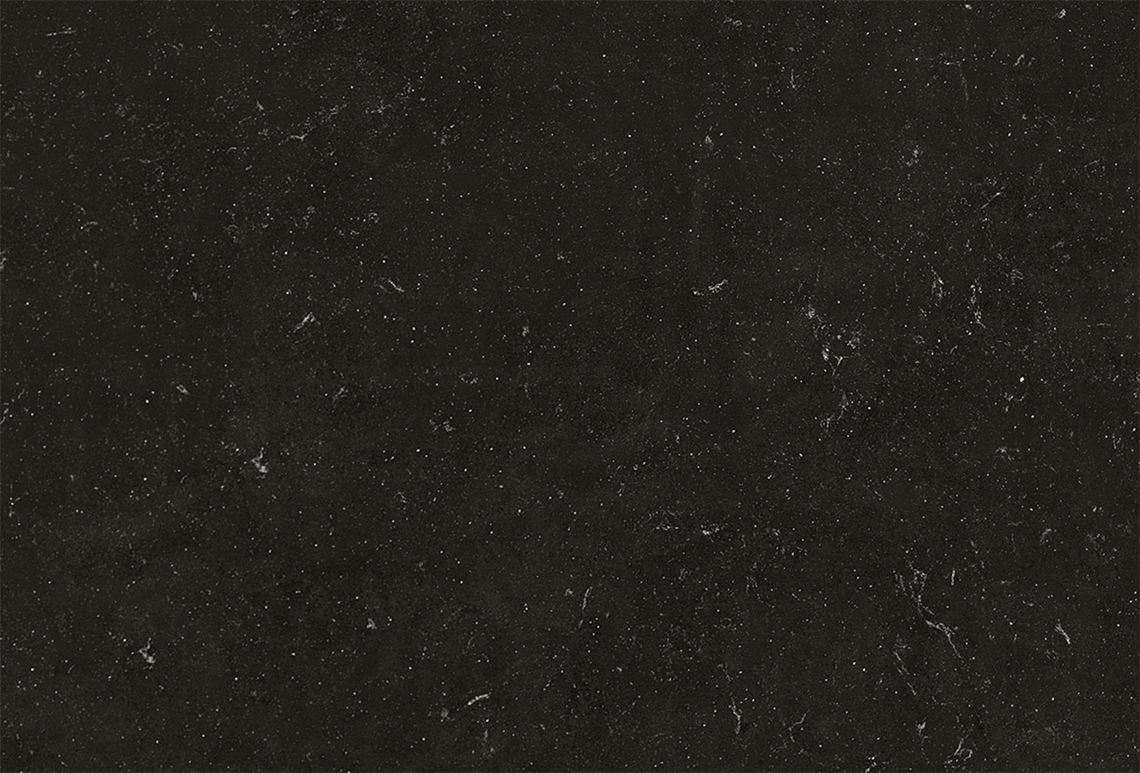 Obsidiana was so named from its resemblance to a stone found in Ethiopia by Obsius. It is a naturally occurring volcanic glass. It is usually an opaque black or grey but may be yellow, red, or greenish-brown. It can be found in its black and brown variations throughout Turkey, in both central and eastern Anatolia as well as in the Aegean region. While Kars is best known for sourcing the obsidian we are most familiar with, Turkey also harbours the more rarely seen green obsidian in the craters of Mt. Nemrut in Eastern Anatolia, while red obsidian can be found in Rize’s Ikizdere region.
Obsidiana was so named from its resemblance to a stone found in Ethiopia by Obsius. It is a naturally occurring volcanic glass. It is usually an opaque black or grey but may be yellow, red, or greenish-brown. It can be found in its black and brown variations throughout Turkey, in both central and eastern Anatolia as well as in the Aegean region. While Kars is best known for sourcing the obsidian we are most familiar with, Turkey also harbours the more rarely seen green obsidian in the craters of Mt. Nemrut in Eastern Anatolia, while red obsidian can be found in Rize’s Ikizdere region.
Obsidiana may have an iridescent sheen caused by inclusions It was used in antiquity for amulets and necklaces. Considered to be one of the protective stones of Turkey, obsidian shields against both internal and external negativity and is believed to release tension and mental distress.
Agate
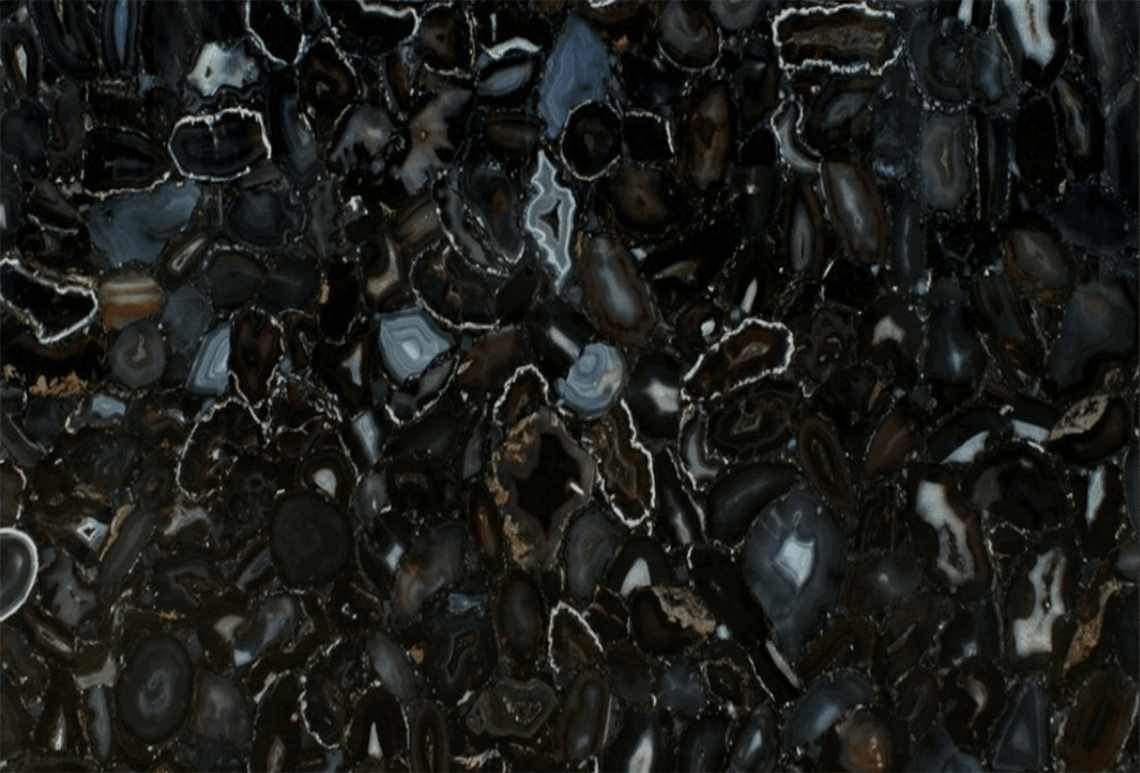 It is a common rock formation, consisting of chalcedony and quartz as its primary components with a wide variety of colours. Agates are primarily formed within volcanic and metamorphic rocks. Decorative uses of agates are known to date back to Ancient Greece and are used most commonly as decorations or jewellery.
It is a common rock formation, consisting of chalcedony and quartz as its primary components with a wide variety of colours. Agates are primarily formed within volcanic and metamorphic rocks. Decorative uses of agates are known to date back to Ancient Greece and are used most commonly as decorations or jewellery.
Stones of Turkey have a number of variations, including tree agate and tube agate. The most famous agate in Turkey is çubuk agate, which comes from the district of the same name in Ankara. The colours reflected in the gem depend on the trace materials but can range from transparent to white, yellow, green, red, brown, and even black. Believed to calm the nerves and help with sleep disorders, çubuk agate is also said to relieve fevers and transform negativity.
Oltu Stone
Oltu stone is a variation of jet, which comes from the town of Oltu in Erzurum Province. A jet is a type of lignite, although it is derived from wood that has altered under extreme pressure. Beds of this organic substance are 70–80 cm in thickness. Extraction is done by digging narrow tunnels and shafts below ground. There are around 600 quarries in the region. It is a very dense mineral-like substance of the nature of coal that does not demonstrate crystallinity. It generally comes in black but can also be velvet-black, blackish brown, grey or greenish. Oltu stones of Turkey have an interesting characteristic, which is their softness when excavated. It only begins to harden when exposed to the air. For this reason, it can be carved very easily.
These black gems are regularly used in making the Turkish “tasbih” prayer beads as well as jewellery and have been used in decorative items since the Bronze Age. It is considered to be a gemstone with healing properties to help ease headaches, migraine pain, and mood swings and alleviate depression.
P.s. The readers are informed that none of the content available on any of the pages of Work-tops.com should be taken as legal advice and that Work-tops will not be held accountable for your use of the information contained in or linked from these web pages.

